Plus a Charge, Plus C'est La Mme Chose Pt. 3: Tesla's Supercharging Stations
A few months ago, BMW announced that it was throttling back (or should that be rheostating back?) on it’s “i” branded EV program, in part due to a lack of public charging station infrastructure. A company that sells as many gasoline and diesel powered cars as BMW does can afford to temper its enthusiasm for cars that run on electrons. A company that only sells battery powered electric cars, as Tesla does, doesn’t have that luxury.
Tycho's Illustrated History Of Chinese Cars: Shanghai SH760
Another rare treasure from China’s not too distant past, found at the Sanhe Classic Car Museum in Chengdu: A brilliant blue Shanghai SH760 sedan. In China, blue is a working man’s color, so let’s call it a hue of Jade. The SH760 was the predecessor of the Shanghai SH760A that we saw earlier on. The SH760 was made from 1964 to 1974, this particular example was made in 1972. We found the SH760 outside the actual museum hall for maintenance. This oldie still sees the road now and then.
No Credit? No Problem! Uncle Ho's Used Cars Has a Low-Mile ZIS For You!
Ho Chi Minh was a mysterious guy; even after reading the definitive biography of the revolutionary schemer who changed pseudonyms as often most of us change our socks, I still couldn’t tell you much about the man who is now his country’s equivalent of all of America’s Founding Fathers rolled into one. However, I can tell you what Ho Chi Minh drove!
Tycho's Illustrated History Of Chinese Cars: Hongqi CA773 Parade Car
Let people go to Chengdu to satisfy prurient desires. I went to Chengdu to visit the Sanhe Classic Car Museum. I found a car that was really for the chosen few, a fantastic Hongqi CA773 Parade Car. The parade car was based on the CA773 sedan which was made from 1969 until 1976. This particular parade car was made in 1974.
Did Sexism and Racism End the Fisher Body Craftsman's Guild? Harley Earl's Grandson Says So
In a recent post on Stillen’s contest to design a body kit for the Scion FR-S, I brought up the history of the Fisher Body Craftsman’s Guild, a scholarship based model making contest for budding designers that ran from 1930 to 1968. Since just about all of the promotional materials for the Guild were targeted at boys, I wondered if any girls ever tried to enter the competition.
Stillen Will Sell Scion FR-S Body Kit Designed By Contest Winner – Should GM Bring Back the Fisher Body Craftsman's Guild?
Former Nissan racer Steve Millen’s aftermarket performance company Stillen is running a contest involving Facebook. Amateur designers can style the company’s body kit that will accompany Stillen’s performance toys for the Scion FR-S. The winner will get to attend SEMA this November, when the body kit will have its first public display. When I saw the headline my first thought was, “What, another social media hypefest?” Just the other day, Derek Kreindler questioned the value of Nissan’s efforts to crowdsource product planning via social media sites. Does the general public know any more about designing cars than it does about product planning?
Toyota MR2: Fear the Robot Eagle!
Members of the MR2 Jihad generally refer to the creature on the hood emblems of their cars as the “Screaming Eagle,” but I say it’s a stoic, tight-beaked Robot Eagle. I hadn’t paid much attention to this emblem, since it’s quite small and mounted on a car snout that sits quite close to the pavement, but then a 24 Hours of LeMons team composed of Toyota engineers created a gigantic Pontiac Trans Am-style decal version for the hood of their MR2. Robot Eagle!
The 1969 Datsun 510: GR-R-R-ROOVY!
Yesterday, I shared a Toyota Corona ad from the February 1969 issue of Playboy. I like the Corona for personal reasons, but if the Time Machine took me back to ’69 and I didn’t have a lot to spend (or even if I did have a lot to spend), the Datsun 510 would be one of my top choices. Wouldn’t you know, there’s an ad for the 510 in the very same issue!
1969: Toyota Corona Gives You Go!
A generous 24 Hours of LeMons racer gave me a copy of the February 1969 issue of Playboy as a gift last weekend, and it’s even more of a time capsule than most publications of its era. The only cars advertised in the issue are the Ford Mustang (Mach 1 and Shelby), Volkswagen Beetle, Datsun 510 (labeled as the “/2”), and the Toyota Corona. Since my very first car was a ’69 Corona, I felt compelled to share this ad.
40 Years Of The M Series - A Pictorial History. Chapter 2
In the first chapter, we watched how BMW’s in-house motorsports department morphed into a separate company, that soon made its own cars. 16 years later ….
In 1988, the BMW M5 saw its second generation. The straight-six was pumped up to 3.8 liters, its power rose to 340 hp.
40 Years Of The M Series - A Pictorial History. Chapter 1
It was 1972, 40 years ago, when BMW did something that many would later imitate: Much to the chagrin of its own engineers, who were convinced they already had the hottest cars imaginable, and that to touch them meant to desecrate their creations, BMW decided to put the tuners out of business, and created the M series.
Allegedly, the M stood for “Motorsport.”
Plus a Charge, Plus C'est La Mme Chose
General Electric EV Charger Then
The annual World Congress of the Society of Automotive Engineers is often a showcase for the most trendy technologies that have buzz in the auto industry. Judging by the number of new engine designs shown in the display area, it’s clear that internal combustion is far from dead.
Time Machine Dilemma: It's 1986 and You Have Enough Money For a New Chevette. What Do You Buy?
After last week’s Time Machine Dilemma (in which you emerged from your time machine in 1973, on Auto Row and with enough cash to buy a new Ford LTD), I thought of doing a 1974 Oil Crisis Diminished Expectations Economy Car Time Machine Dilemma. However, the really challenging econobox-shopping decisions came a bit more than a decade later, when the Hyundai Excel and Yugo GV arrived in a marketplace full of Japanese subcompacts duking it out for supremacy and Detroit trying to stay relevant. Yes, 1986! So, you exit your time machine in front of the Chevrolet dealership with $5,645 in your pocket. That’s enough to buy a new Chevette at full list price (the out-the-door-price would almost certainly be lower, but we’ll go with MSRP for this exercise). Do you get the antiquated-but-simple rear-drive Chevy for your penny-pinching commuter… or something else? Let’s look at your choices.
Time Machine Dilemma: It's 1973 and You Have Enough Cash For a New LTD. What Do You Buy?
The discussion of yesterday’s Junkyard Find, a 1973 Ford LTD, got a bit heated at times. Some felt that the ’73 LTD was an abomination too horrific to contemplate, while others (including most who had actually driven one back in the day) opined that it was a pretty comfy pseudo-luxo-chariot and no worse than its contemporary rivals. Both sides have valid points, which got me to thinking about what I would do if a time machine were to drop me off at Auto Row in 1973 with the money to buy a new LTD (assuming I was required to spend the money on a new car, instead of giving it to my 7-year-old 1973 self with instructions to buy Microsoft stock a few years hence). Would I get the LTD… or something else? If something else, what?
Blind Spot: Digging Deeper Into GM's Fuel Economy Record
Old habits die hard. Whether it’s GM’s desire to slice-and-dice its fuel economy achievements to make them look better than they are, or our instinct to correct the record, it’s all just a little bit of history repeating.
The Automotive World of the Fair, 1964
Mention the 1964 New York World’s Fair to a car enthusiast and they’re likely to associate it with the 1964 1/2 Ford Mustang, which was introduced April 17, 1964 on the fair’s opening day. As former Ford president Lee Iacocca told Mustang Monthly in a 2004 interview, “Where else could you introduce a car at such a world-class event?”. In 1964 and 1965, the New York World’s Fair was about as big as events got.
Blast From The Past: The Story Of The GM Tech Center And The Electrovan Explosion
The autoblogosphere is buzzing with news of an explosion in an electric vehicle battery testing facility at General Motors’ Tech Center in Warren, outside of Detroit. This isn’t the first time that the Tech Center has been the site of an explosion involving alternative energy. Contrary to conventional wisdom, the domestic automakers have invested many millions of dollars trying to develop alternatives to gasoline power over much of the second half of the 20th century. Almost 50 years before Toyota introduced the hybrid Prius and Honda started making the FCV hydrogen fuel cell powered car, General Motors was working on cars and trucks powered by fuel cells or batteries. Not all of that R&D proceeded without incident.
How Honda Survived the Vigor, the Del Sol, and the Lawsuits: Super Cub!
For about 15 years, the Civic and the Accord were untouchable in the American marketplace; Honda sold all they could build here plus as many as they could import under the limitations of the Voluntary Export Restraint agreement of 1981. Then… well, Soichiro Honda died and Honda sort of lost its way. Sure, their cars were still good, but the competition had caught up and the Honda magic had worn off for American car buyers. Honda car sales in Japan had never been so great, so what kept Honda going through the lean times? Two-wheelers! I spent two weeks in Vietnam last month and came away with a new appreciation for Honda’s utter dominance of the Asian motorbike market.
Quick, Why Won't This Car Pass the Smog Check?
I’ve had more Honda Civics than any other type of car (at least one example of each of the first five Civic generations), at one point owning two ’85 hatches and a CRX at the same time. The mid-80s CVCC cars were great to drive and very reliable (provided you didn’t overheat the engine— ever), but when California tightened up smog-check requirements in the early 2000s it became impossible to keep one registered. Why? This.
What's the Deal With Those FLOOR TEMP Warning Lights in Malaise Era Datsuns?
A couple of recent Junkyard Find Datsuns (the ’78 510 and ’77 280Z) featured mysterious “FLOOR TEMP” idiot lights on their dashes. Floor temp? Why?
Tycho's Illustrated History Of Chinese Cars: A Red Flagged Audi With A Chrysler Engine
Hongqi CA750f.
It’s one of those Tuesday afternoons here in Beijing. The air is barely breathable, and somewhere, a hammer drill is duking it out with a concrete ceiling. Time for another installment of Tycho’s Illustrated History Of Chinese Cars. Today we have a very interesting Chinese car. It’s a 1983 Dodge 600 sedan, dressed-up as a Hongqi CA750F. How did it get into China?
When A Nissan Won The Daytona 24 Hours
The early 90s were tough times. Stock markets had crashed, real estate bubbles had popped, budgets were slashed. The fabled Daytona 24 hours endurance race survived (barely) with Rolex as a sponsor.
In 1992, the field was down to 49 cars, one of them a newcomer from Japan, Number 23, fielded by Nissan’s Nismo (Nissan Motorsports International) factory team.
Possibly the Greatest Badge Engineering Feat In History: Isuzu Statesman Deville!
Last week, I had never heard of the Isuzu Statesman Deville. Then, my fellow LeMons Supreme Court Justice suggested that I do a quick internet search for the name of this fine Detroito-Australo-Japanese luxury sedan… and my life changed forever.
Why I Hate The General Lee 'Dukes Of Hazzard' TV Star Car
One of the most famous cars in the world is one of the most despised cars on my very short list of despised cars.
Hell – who am I kidding? I love all old cars more than most people.
But I don’t love the General Lee.
Ten Hours, 800 RPM, Full Throttle: How Chrysler Used To Test Engines
Now that I’m scouring eBay Australia for crazy Detroit Down Under cars— maybe even as crazy as a 4-71-blown six-cylinder Torana— I’ve been dragged once again into the Whirlpool Of Arcane Internet Car Knowledge. You know how that goes: you go to look up the Australian Falcon on Wikipedia, a reference to the Valiant Charger leads you to the mother of all Chrysler-related online time-sucks, and then your whole day is used up. This time, Allpar sent me to Valiant.org, and that’s where I found the page on the Chrysler Hemi-Six engine. There you’ll find a description by a Chrysler engineer of how his Australian counterparts tested their new (American-designed) engine:
1949: Architectural Illustrators Need Tailfins To Sell Buildings!
While waiting for my wife to stagger out of the dentist’s chair after a root canal, I grew bored with the October, 1994 issue of Highlights and other similar waiting-room reading material and noticed this painting on the wall. It turned out to be the illustration made by the Denver architectural firm that built the dentist’s office building, back in 1949.
Maybelater's Trip To Cuba (Exclusive Pictures)
This Desoto has four wheel disc brakes and is the nicest Detroit iron I found...
(Some of the best stories in TTAC are told by the Best & Brightest, our readers. Many a TTAC career (mine included) started with a comment, then the odd story, and before you know it … Today’s story is from Ted Grant a.k.a. Maybelater. He sent in some pictures from a trip to Cuba. Maybelater is Canadian, he’s allowed to.
When asked for a few words, Ted said he’s not a writer. Then, he wrote the email that follows.
If you have a good story to tell, in words, pictures, or both, send it to me. It will be pro bono, but who knows, it could be the start of a glorious writing career. – BS)
I just returned from holidays in Cuba and snapped some shots of some vehicles in and around Santa Lucia. Most of the pre 1959 Detroit iron is heavily reworked and tired, but the fact that they are still in use is a testament to the original design engineers and the Cuban nationals’ ingenuity with limited resources. Our tour guide told us that even the ugliest POS vehicle that still runs commands big money and is a luxury for the locals. Some older cars have been handed down in families, but the majority of car owners have rich relatives in foreign countries that help them with the purchase. A typical 50’s Detroit ride runs 10 to 15 thousand so they are indeed a real luxury.
Tycho's Illustrated History Of Chinese Cars: The Volkswagen Santana China Retrospective
Volkswagen announced an all-new Santana for the Chinese market, it will debut in 2013. Time to say “zai jian” (“good bye,” but nobody says that anymore in China, they say “bye bye”) to the current Santana, made by the Shanghai-Volkswagen joint venture since 1985. And time for a short history of the Santana. History saw the original Santana, the Santana Variant, the Santana 2000, the Santana 3000 and the Santana Vista. We take a look at all of them. On the picture above is a party in Shanghai when the very first China-made Santana rolls off the assembly line. And when they said “party” in 1985, they meant it. Serious partiers they were.
Hammer Time: What Should Have Been
I remember looking at the then brand new Ford Five Hundred and thinking to myself, “This would make one heck of a Volvo.”
Like the Volvos of yore this Ford offered a squarish conservative appearance. A high seating position which Volvo’s ‘safety oriented’ customers would have appreciated. Toss in a cavernous interior that had all the potential for a near-luxury family car, or even a wagon, and this car looked more ‘Volvo’ than ‘Ford’ to me with each passing day.
Something had to be done…
Return Of Sakura And Fuji: The Dogged Datsuns Run Again
and came home with a trophy? This story has a sequel.
In 1958, two Datsuns, named “Fujii” and “Sakura” entered the Mobilgas Trial, 10,000 miles all around Australia. Surprisingly, “Fuji” won its class title. “Sakura” finished fourth.
Half a century later, the cars were found in a warehouse in Japan.
Saab: The Eulogy
Brethren, we are once again gathered together to mourn the passing of another automobile company. Saab was of that rare breed of car that always had a band of devoted, aye, fanatical followers. In her prime, Saab could not fail to ignite the after-burners of anyone with a predilection to genuine character, speed, innovation, intelligence, and even sexy good looks (at times). Not bad for a company that never once designed a clean-sheet new engine and borrowed more platforms than Heidi Klum. But when you’re small and from Sweden, resourcefulness is essential: Saab finagled an existence in this brutal industry far longer than might have been expected. But now she joins an august group of other fallen automotive heroes in Valhalla: Borgward, Panhard, Tatra, Kaiser, Glas, TVR, Jowett, etc…better that then whoring herself to another rich benefactor. But Saab’s story is worth retelling.
That Took Guts: How A Funky Little Datsun Won The World's Cruelest Rally
It was known as “The World’s Cruelest Rally:” The Mobilgas Trial, 10,000 miles all around Australia. In 1958, there were two entries, regarded as a joke by the burly Aussies: A pair of tiny Datsun 210s, named “Fuji” and “Sakura”.
The suicidal idea was had by marketing manager Yutaka Katayama. Aged 102 years, he is still alive to tell the story:
Car of the Year Revisionism, 1995 Edition: If Not the Cirrus, What?
There’s a nice comfortable cushion of years between the present and the 1970 and 1976 Motor Trend Cars of the Year, which gave our discussions about What Might Have Been a certain detachment. Today’s Car of the Year Revisionism discussion, however, takes as its subject a car that’s still with us in large numbers.
Car of the Year Revisionism, 1976 Edition: If Not the Volare/Aspen, What?
We went all 20/20 hindsight on the 1970 Motor Trend COTY choice yesterday, and today we’ll be jumping right into the depths of the Malaise Era for the MT gurus’ 1976 choice: the Dodge Aspen/ Plymouth Volaré
Car of the Year Revisionism, 1970 Edition: If Not the Torino, What?
Having just spent a weekend officiating at a race with one of the perpetrators of the latest Motor Trend Car of the Year choice, I got to thinking about past controversial COTY choices… and what choices we might make today, with the benefit of hindsight. Second-guessing the 1971 and 1983 choices is fish-in-a-barrel stuff (though I think the very radical-for-Detroit Vega deserved the award in spite of its terrible execution), but you can find tough choices all the way back to 1949. Today we’re going to talk about 1970’s Car of the Year winner: the Ford Torino.
Forward Into the Past Into the Future – Brooks Stevens & Dick Teague Predict the 1970s From 1963
Back in junior high in the late 1960s, we had an assignment to write about “the good life in the year 2000”. Since I regularly read magazines like Popular Science and Mechanics Illustrated, it wasn’t too hard to put something together about edible silverware (didn’t happen) and microwave ovens (did). Perhaps that’s why I like the site Retro Future so much. There’s something meta about looking back into the past at how people looked forward into the future. While researching the Brooks Stevens Studebaker concepts I came across this 1963 clipping from the Milwaukee Journal. Stevens was based in Milwaukee and his hometown paper reported on a panel at the SAE congress in Detroit which featured Stevens and Richard Teague, who was by then the head of styling for American Motors after stints at Chrysler, GM and Packard. Stevens worked as a contract designer for a variety of non-automotive companies in addition to his work for Studebaker. The topic of the SAE panel was the car of the future. Stevens had a grandiose plan for a rolling living room. Teague, no stranger to cutting edge designs himself (cf. Packard Predictor) suggested a more evolutionary process. The interesting thing is that they both sort of turned out to be right, if not on the exact time frame.
"America's Car Museum" Rises In Tacoma
The LeMay Museum in Tacoma, WA won’t be completed until June, but the NY Times reports that it aims to become on of the premiere automotive museums in the country, rivaling collections like the Peterson and Harrah museums. And at 165,000 square feet, the building that is rising in Tacoma needs to be huge: though “only” 750 vehicles will be exhibited at a time when the building is done, the LeMay collection is far larger than that. Although even curator David Madeira isn’t sure how many vehicles actually belong to the collection.
“I don’t know,” Mr. Madeira said recently in an interview at The Times, when asked how many vehicles were in the possession of Harold LeMay, the garbage-disposal magnate whose collection of American automobiles would comprise the majority of the museum’s holdings. Mr. LeMay, who died in 2000, was prone to buying a barn or even a field containing old automobiles just to prevent their contents from landing in a junkyard. “He was not a connoisseur; he was a true collector,” Mr. Madeira said.
Once holding at least 3,500 vehicles, the collection has been cut to “north of a thousand” aimed at representing the sweep of American automotive history. And those will be joined by vehicles from the collection of watchmaker Nicolai Bulgari in order to create an automotive museum that founders hope lives up to the name “America’s Car Museum.” Since it’s right up I-5 from me, I’ll be sure to report on the collection and whether it reaches that lofty goal when it opens to the public next summer.
ZAP Still Alive, Alias Still Coming (Or Not)
The SUV That Might Have Been: The Marmon-Herrington Rhino
Axle and transfer case-maker Marmon-Herrington is still around, supplying OEMs and the aftermarket alike with up-rated drivetrain components. But back in the ’40s and ’50s, the firm designed its own vehicles as well, from an air-droppable tank, to a South African armored car, to monocoque electric trolley buses. Its predecessor company, Marmon Motor Car Company, even built the first car to win the Indy 500, the Marmon Wasp. Sadly this beast, an experimental amphibious off-road (on-marsh) vehicle called the Rhino ( more here), was never produced. Otherwise, the Marmon name might have been exhumed during the ’90s SUV boom by a bespoke coachbuilding firm, offering specially-bodied medium-duty truck chassis bearing the brand name that won the first Indy 500 and parachuted into Nazi Germany. Imagine the possibilities…
What's Wrong With This Picture: This Modern Unimog Edition
How much do things change in 60 years? Sometimes the best answer to that kind of question is a picture. Here you can see an original Unimog (right), built sometime between the start of production in 1948 and 1951, when Mercedes bought the operation in order to expand it enough to keep up with demand. On the left is a “60th Anniversary” Unimog design concept, celebrating not the actual birth of the Unimog, but its purchase by Mercedes. Needless to say, the contrast between the two is… breathtaking. And if you’re curious about the evolution of this hugely influential vehicle, if you can’t help wondering how it grew from a (relatively) tiny, spartan utility vehicle to a garish, Mercedes-starred behemoth, be sure to check out Bertel’s illustrated history of the Unimog. It makes you wonder what the next 60 years have in store for vehicles like this… [images courtesy: Autobild]
BMW Owners Finally Admit Nazi Past
The Quandt family, major shareholder of BMW, and one of the richest in Germany, is finally and belatedly confessing to its Nazi-past. Patriarch Günther Quandt was an early member of the Nazi party, he joined 1933, after Hitler’s election. During the Third Reich, Quandt company empire was kept running by more than 50,000 slave laborers. Many businesses that were taken away from Jewish owners ended up in the hands of Quandt. He even had odd family ties with the Nazi elite. His second wife Magda, which he had married when she was half his age, divorced him eight years later, only to marry propaganda minister Joseph Goebbels, with Adolf Hitler as a witness. While other German carmakers, first and foremost Volkswagen, came to terms with their past, the owners of BMW denied it until recently. When the German Forced Labor Compensation Program was established, the family declined to make a contribution, claiming they had no reason to do so.
The Last Muscle-Car War: Detroit Battles For Cop-Car Supremacy
Last fall, the first tests of the new Chevy Caprice PPV, Dodge Charger Pursuit and Ford Taurus Interceptor generated quite a bit of interest here at TTAC and beyond, as three all-new contestants battled to replace the outgoing Crown Victoria as America’s cop car. At the time, the Caprice seemed like the clear performance favorite, but as Sajeev Mehta has pointed out, there’s more to the cop-car equation than pure speed. Although good luck trying to tell the Detroit Three that, as all three are cherry-picking performance stats in the wake of the latest round of Michigan State Police testing.
The Ten Myths Of Bob Lutz
I’ve often wondered if there is a relationship between the decline of the automobile’s cultural relevance, and the decline of the larger-than-life auto executive. Clearly the car’s waning ability to excite, inspire and shape material culture is a complex phenomenon with no single cause, but it’s got to have some kind of connection to the people making the cars. After all, the original Mustangs, Corvettes, and Model Ts emerged from firms led by such oversized presences as Lee Iacocca, Bill Mitchell and the original car-guy-as-folk-hero, Henry Ford. Today there’s no shortage of brilliant, engaging, passionate people working in the car industry, and yet few contemporary executives have made the kind of cultural impact that their predecessors once did. This, in a nutshell, is why Bob Lutz fascinates me: though he never made as wide of a mark on popular culture as an Iacocca or DeLorean, he’s one of the last remaining links to an era in the car industry that now seems impossibly out of reach.
But because he is not a man of the times, it’s incredibly easy to misunderstand the guy. In fact, having spent several hours chatting with him on and off the record, I’d argue that the best anyone can hope for is to simply not misunderstand him. In that spirit, I’ve assembled ten impressions of the man that I found not to be true in our conversation. But be warned: just because these “myths” aren’t completely true doesn’t mean they’re completely untrue either…
"Show Me Your Tatras": An Argument For Automotive Preservation
The question of automotive preservation jogged an unblogged memory loose today, from earlier in this chaotic summer when I was in Wolfsburg, Germany. I was touring the Zeithaus, or “House of Time,” in Volkswagen’s sprawling Autostadt, taking in the remarkably well-curated exhibit of some of the most influential and important cars of all time. Unlike the GM Heritage Center, for example, the Zeithaus is not reserved for VWs alone, but includes fine examples of undeniably iconic cars from various marques. Organizing VW’s official museum in this way gives the brand a sense of sophistication, sending the message that VW knows quality even when it’s not the one producing it. And the Zeithaus’s curators use this well, offering up such flattering (if ultimately apt) comparisons as an Audi A2 poised alongside a Citroen DS.
Are You Ready For: A National Register Of Historic Vehicles?
You may not have heard of the Historical Vehicle Association before, but it’s a 30,000-member advocacy group that actually emerged from a special insurance plan for historic cars offered by Hagerty Insurance. Now ratified by the Fédération Internationale des Véhicules Anciens, the HVA offers commissions on History, Skills and Trades, Technical Issues and Legislative Affairs, as it seeks to fulfill its mission of “Keeping Yesterday’s Vehicles on Tomorrow’s Roads.” One of its more laudable legislative tasks of late has been raising awareness about the damage caused by ethanol-blended gasoline and seeking to ban mandatory blending. But now it’s got another goal, as reported by Automotive News [sub]
The federal government has national registries for historic buildings, boats, airplanes, railways — you name it. But not for cars. And the Historic Vehicle Association is trying to change that…
A concern among enthusiasts is that government initiatives — such as the 2009 federal cash-for-clunkers incentive — could send many vintage cars to the crusher. Legislation might prevent cars from being destroyed. Or it could allow gas guzzlers to remain on the road if other laws preclude them.
As it so happens, my significant other is an Architectural Historian who spends her days evaluating buildings that could be impacted by federally-funded projects… so I hear about this issue (in terms of the Register of Historic Places) more often than you can even imagine. And it’s not as simple as it might seem…
Requiem For The Last American Car
[Editor’s note: Today, at 12:25 pm, the very last Panther-platform Crown Victoria rolled off the line at St. Thomas Assembly Plant. Ryan Paradis, a.k.a. “86er,” has the honor of eulogizing the beloved beast in his first-ever contribution to TTAC]
It has become beyond trite by this point to say that, with the end of the Crown Victoria, Grand Marquis and Town Car, an era comes to an end. And yet it is thus: the last of the body-on-frame, rear wheel drive and eight cylinder engine passenger cars, once a species unique to North America, have now reached the end of an 80 year span that commenced with the advent of the 1932 Ford V-8.
Having transported generations of Americans through some of the nation’s finest decades, full-size cars like the Crown Victoria, Grand Marquis, and Town Car are now an anomaly. While large V8-powered sedans made a comeback in the 21st century, the Ford Panther chassis was one of the very few full-size, rear-drive sedans that never left. And today we bid it farewell.
Bob Lutz: "I'll Take The Blame For GM's Weight Problem"
The theme that’s emerged most clearly from my interview with Bob Lutz was, somewhat counterintuitively, compromise. Every vehicle that’s developed and built is the product of nearly countless compromises, on everything from performance to efficiency, and from weight and materials to cost. The question isn’t so much if you compromise when developing a new car, but how you compromise… as was demonstrated in our last Lutzian anecdote. And even during my interview, as the conversation bounced from GM to Chrysler, from mass-market products to niche halo cars, I was thrilled that this issue kept coming up. Why? Because this theme played perfectly into the question that was at the top of my list of prepared questions. After all, there has been a mystery haunting GM followers for some time now… a mystery that I’d never seen a journalist ever ask about. And there I was, sitting with one of the few people who was even capable of fully answering it. So I just waited for a pause, opened my mouth and asked:
Why do GM cars weigh more than other cars?
I had no idea what kind of answer to expect… but I definitely wasn’t expecting the answer I got.
Cars Only Bob Lutz Remembers: The 1983 Ford Ghia Barchetta Concept
Bob Lutz admitted in his book Guts that he “possesses a certain duality of mind,” and he ain’t kidding. After all, how could someone spend a career in an industry built on “the industrial logic of scale” (to borrow a phrase from Sergio Marchionne) while trying to connect new vehicles with the lust centers of the human brain without developing a certain amount of creative schizophrenia? But, as anyone who has ever driven a Pontiac Solstice knows, sometimes compromises are made between the conflicting pulls of lust and practicality… and when those compromises must be made, Lutz tends to err on the side of lust. I confronted him about this tendency in our recent conversation, and rather than accept the criticism, he doubled down on his premise that lust-worthy design is more important than practicality. And he illustrated his point by telling the tale of a long-forgotten concept and its troubled path to production.
Cars Only Bob Lutz Remembers: The Dodge Dakota Convertible
Welcome to Bob Lutz week at TTAC! I spent several hours recently with the auto industry’s most notorious executive, and elements of that interview will be the basis for much of my writing this week. We’ll also be capping the whole thing off by voting on the 2010-2011 Lutzie award for most unfortunate quote by an auto exec. And rather than jumping right into the meat of the interview, I want to kick off Lutz week by looking at a few cars that came up in our meandering conversation. After all, these are not just vehicles… when Lutz brings them up in an interview, they become stories, little encapsulations of his philosophy or the state of the company that made them. Let’s start with a car that I literally had never heard of before he mentioned it almost in passing: the Dodge Dakota Convertible. Eat your heart out, Murano CrossCabriolet… the Dakota was the original “WTF-vertible.”
Quote Of The Day: "Don't Blame Me For The Bailout" Edition
The Detroit News reports that former Vice President Dick Cheney claims to have opposed the decision to bail out GM and Chrysler, writing in his forthcoming memoir:
“The president decided that he did not want to pull the plug on General Motors as we were headed out the door… Although I understood the reasoning, I would have preferred that the government not get involved and was disappointed — but not surprised — when the Obama administration significantly increased the government intervention in the automobile industry shortly after taking office.”
Cheney notes he had voted against the 1979 $1.5 billion loan guarantee for Chrysler Corp. in the House. “I had continued throughout my career to be philosophically opposed to bailing out specific companies or industries,” he wrote.
Chart Of The Day: The Toyota Camry Index
As Camry-fest rolls on, we found an interesting little chart over at Edmunds Autoobserver, which shows that this latest Camry has the lowest inflation-adjusted MSRP in the model’s history. Amid all the talk of record-high transaction prices, Toyota obviously thinks MSRP still matters, as Autoobserver reports
The current-generation Camry has a theoretical build of 1,246 combinations. The 2012 Camry will be available in a startlingly meager 36 combinations, because consumers have told Toyota they want a simpler ordering process… There will be four trim packages from which to choose, and despite the significant improvements in the model, any 2012 Camry will be priced close to or less than a comparably-equipped 2011.
The 2011 Camry L, the base model produced in very low volume and sold almost exclusively to fleets, starts at $20,195. The new 2012 Camry L will start at $21,995 (plus $760 for destination), the core 2012 Camry LE package for comfort and value will be priced at $22,500. The sportier Camry SE, currently priced at $22,965, will start at $23,000. The premium trim package Camry XLE ($26,725 for MY 2011), will start at $24,725, a $2,000 reduction. Toyota notes that comparably equipped, prices for all trim levels have dropped.
So, even though you need fewer inflation-adjusted dollars than ever before to buy a base Camry, very few of those models will be built. Toyota may be talking value, but in this market you need to shout it…
Dodge Dakota Production Ends Next Week, As Small Pickups Show Few Signs Of Recovery
Few will be surprised to hear that Chrysler Group will end production of its Dakota compact pickup truck next Tuesday, as sales of all small-to-midsized pickups have cratered over the last decade. Indeed, the Detroit News reports that the end of Dakota production will result in the layoffs of only 39 employees, although that number may climb as high as 150. In any case, the end of Dakota production is just the tip of the iceberg: Ford’s Ranger goes out of production in December of this year, and GM’s Colorado/Canyon twins will be discontinued sometime next year. Though Dodge plans to bring a minivan-platform-based AWD “lifestyle pickup” to market as a 2014 model, and Chevy is planning to build a North American variant of its new Global Colorado for the 2015 model-year, we’re looking at a several-year interlude in which no American OEM will offer a small pickup in the US. And looking at this chart, you almost can’t blame them…
The American Mercedes
No, I’m not talking about the cars and SUVs that Mercedes assembles in Alabama. Yesterday, Jack Baruth told us about the relationship between the American Steinway and German Daimler companies and the cars that Steinway started assembling under license from Mercedes in 1905. When I read Jack’s article I remembered that I had something in my collection of press kits, sales brochures, images and and assorted swag (with apologies to Mr. Zimmerman) that I’ve been accumulating for the past decade or so of working the press previews for the Detroit, Chicago and Toronto auto shows. In 2006 Mercedes Benz distributed a reproduction of a reproduction. It’s actually a very cool little piece of automobilia and a nice facsimile of a historical artifact, in a couple of ways.
It’s a small booklet, less than 40 pages, called The American Mercedes. It was originally distributed in 1906 by the Daimler Mfg. Company, on Steinway Ave. in Long Island City, and promotes the 1906 45 horsepower “American Mercedes”. It was reproduced in the early 1960s, and the copy M-B gave out in 2006 had a 1961 afterword and an insert from 1964. The whole package is chock full of historically interesting aspects.
Hammer Time: Let's Party Like It's 1989
Wake up. Have breakfast. Head off to work. Wait… you need to put on some decent clothes for goodness sake! You’re not a teenager anymore.
You put on the finest thrift store clothes you can find and head off to your car and… wow! Who put a Delorean with a flux capacitor and gullwing doors on your driveway?
Steinway and Daimler: The Grand Partnership And The Half-Million Dollar Mercedes
Steinway & Sons may be the last great American brand: from 1853 to the present day, the company has built world-class musical instruments by hand in New York. Unlike their contemporaries in the guitar-making business, Steinway never went through “bad times”, even after the family sold out in 1972. (Interestingly, although CBS bought both Fender and Steinway, the paths taken by the two companies under CBS ownership were very different.) Nor have they become mere cloacae for the diarrheal discharge of Foxconn’s suicide factories the way Hewlett-Packard, Dell, and Apple have. Steinway’s business model is simple and hasn’t changed for over a century. They build the pianos in the United States to exacting standards, charge premium prices for them, and everybody is happy.
The power of the Steinway brand is such that everybody from random auto reviewers to big-time ad agencies feels compelled to mention their products in an automotive context. Googling the Steinway name together with that of any major auto-media outlet will yield results ranging from dismal to pathetic. Engines, body panels, dashboards, radio switches, and brake feel are all likened to the company’s eight-hundred-pound musical gorillas. There’s something about Steinway that gets car guys excited.
Wait till they find out that Steinway was in the business of building automotibles before Soichiro Honda was born, and remains so, in minor fashion, to this day.
Midsized Wars: The "Big Six" Sedans, 1995-2010
With signs of change appearing in the midsized segment, I thought we would look at our archived sales results for the “Big Six” sedan nameplates in hopes of some historic context. And here it is: competitive convergence is turning what used to be Toyota and Honda’s wading pool into a bloody knife fight.
Trekka: Skoda Meets Land Rover In New Zealand
Each weekend, TTAC turns its attention to some of the more obscure news and stories from around the world, taking you from Jakarta to Haiti to Monaco… and now to New Zealand. Hungarian Skoda blog stipstop.com takes us to New Zealand in 1966, when Auckland-based Motor Lines were able to adapt a Jowett Bradford-based utility vehicle made by Kawerau into a Skoda Octavia-based Land Rover lookalike… and the Trekka was born! Only 2,500 of the little runabouts were made in steel-paneled wagon and “ute” bodystyles (specs here), of which five served duty in Vietnam and one was purchased for unknown reasons by General Motors, which shipped it to Detroit in 1969. The Trekka was an “icon of the Kiwi can-do spirit” by the time it went out of production in 1973, and it was much loved in New Zealand, although it was never as capable as its Landie-alike bodywork suggested (a limited-slip differential was eventually developed for it). But the low-cost Trekka (it cost £895, less than a Morris 1100) was ultimately a product of New Zealand’s import tariffs, and as these began to fall in the 1970s, the Trekka’s day had passed. Today, fewer than 30 remaining models have been documented by trekka.co.nz.
"Ask Amy": Why The Morris Minor?
“Ask Amy” advice columnist and self-help memoir author Amy Dickinson has the late Ann Landers’ old slot on the Chicago Tribune. She also has a 1967 Morris Minor. She fell in love with the car the first time she saw one, soon after she moved to London with her then-husband, in 1986. “They are so cute, they look like ice cream cones,” she says. She loves the clatter of its engine, and the way people smile when she drives by, and she says it is her favorite material object in the world.
So after her husband embarked on an open-endedly extended business trip, in 1988, Dickinson, then a housewife, took her five week old baby, Emily, in a taxi to a dealer who restored Morrises, and made her purchase, for 1,500 pounds (roughly $5,000 in current dollars). “One advantage of driving a beautiful, quirky vintage car is that it really helped me meet people,” she says. “So many men said to me, ‘I had one of these,’ and ‘my dad had one of these,’ not to mention ‘getting rid of my Morris Minor was my biggest mistake.’”
Richard Retting Cashes in on Lifetime of Traffic Camera Advocacy
The one man most responsible for the spread of red light cameras in the United States is now enjoying the fruit of his labor. Richard A. Retting was New York City’s deputy assistant commissioner for traffic safety programs as the Big Apple considered becoming the first in the US to operate intersection cameras. Planning for the program began in 1983 and continued through 1991 when then-Mayor David Dinkins activated the system. For this achievement, Retting was dubbed the father of the red light camera in America, and today he is earning money directly from the systems that have followed New York’s lead.
Does CAFE Doom Us To A Hybrid Future? Not Necessarily…
If you asked an auto industry lobbyist, say, a month ago, what the big fights were over in CAFE negotiations, he probably wouldn’t have said “the number.” In the parlance of the Potomac valley, that means everyone at the table knows that at some point they’re all going to join hands and sing kumbaya over one highly symbolic number. Not surprisingly, the numbers that everyone in DC has been looking at fall right in the middle of these four scenarios… not coincidentally the tipping point where hybrids swing from a quarter to nearly half the market. But are these WSJ [sub] charts even accurate? John Krafcik, CEO of Hyundai Motor America and the industry’s CAFE contrarian implies that it’s not for everyone, telling Automotive News [sub] that
Honestly, our focus isn’t on hybrid. Our focus is on optimizing internal combustion and getting as many fuel-efficient vehicles out there, across the lineup. That’s the way you do it. If you look at the math, if you look at how CAFE math works, volume trumps everything.
But then Krafcik oversees a brand that doesn’t just sell lots of high-efficiency cars, it sells very few pickups… resulting in a sales-weighted fleet fuel economy 35.7 MPG in the first half of this year (as calculated by Hyundai). Did we mention that the 2016 passenger car standard is 37.8 MPG, at which time it figures its non-hybrid Elantra will get 50 MPG combined on the CAFE test? And nobody can look at Hyundai’s six-month sales performance (up 26%) and argue that Americans don’t want to buy fuel-efficient cars. In short, Hyundai is proving that automakers who can make money selling appealing, fuel-efficient cars need not binge on hybrids Even, according to the EPA’s final rule on standards through 2016, for manufacturers trying to sell as many pickups as possible.




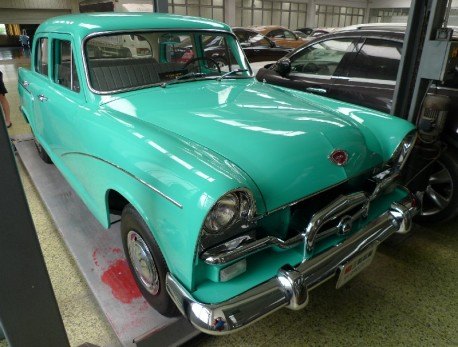
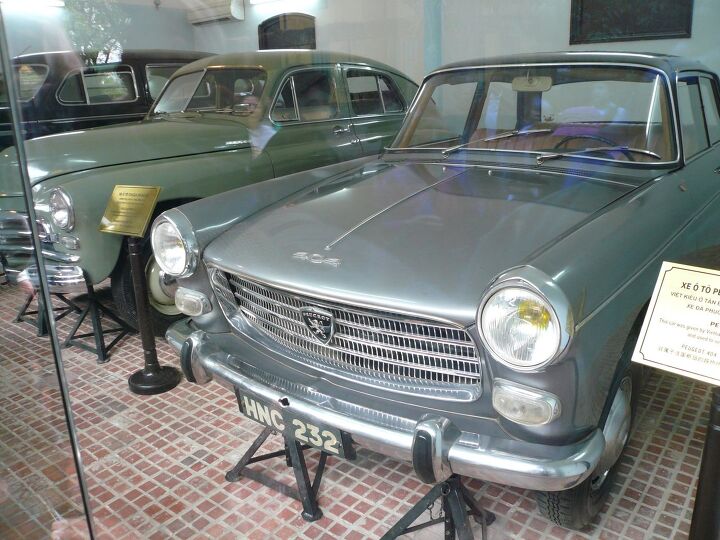
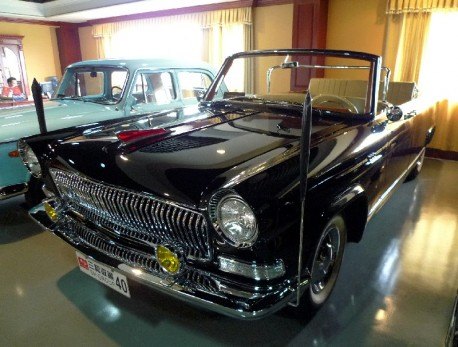
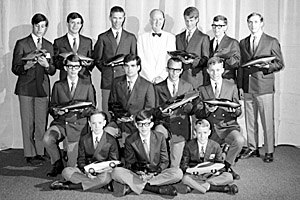


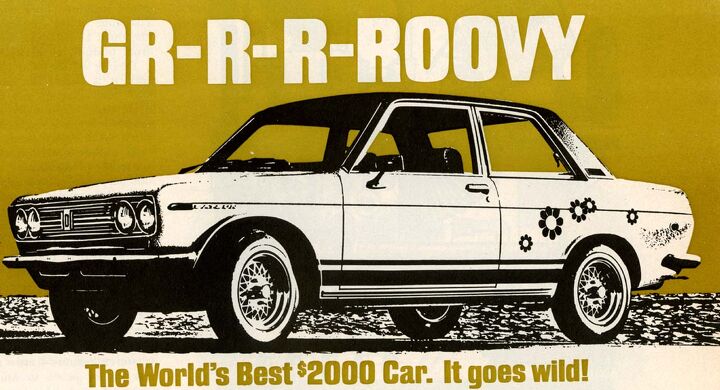

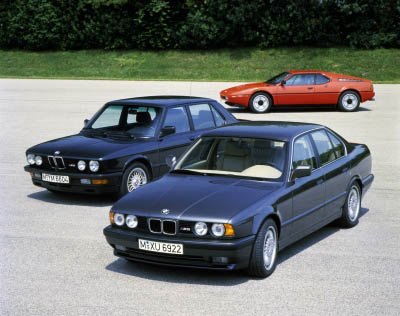
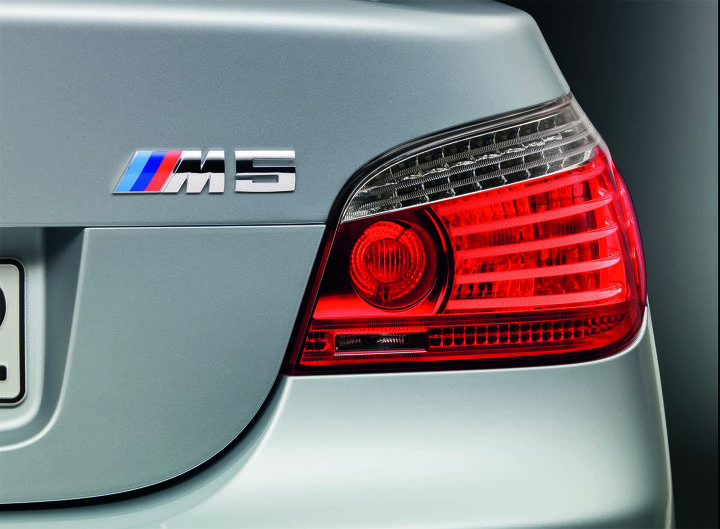
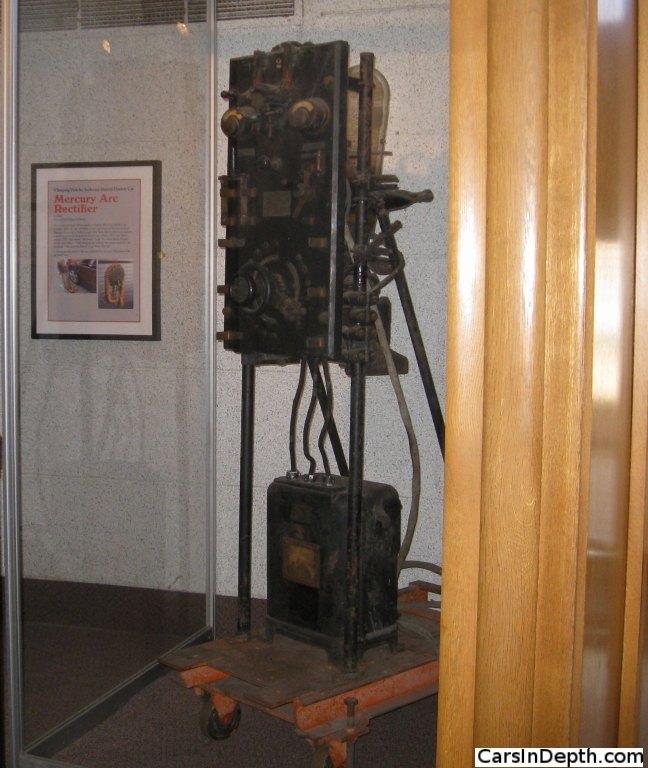




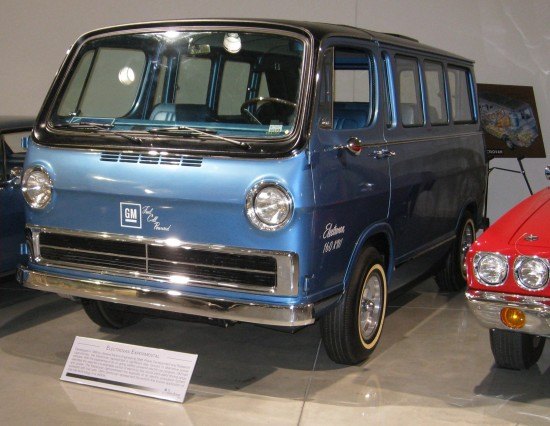

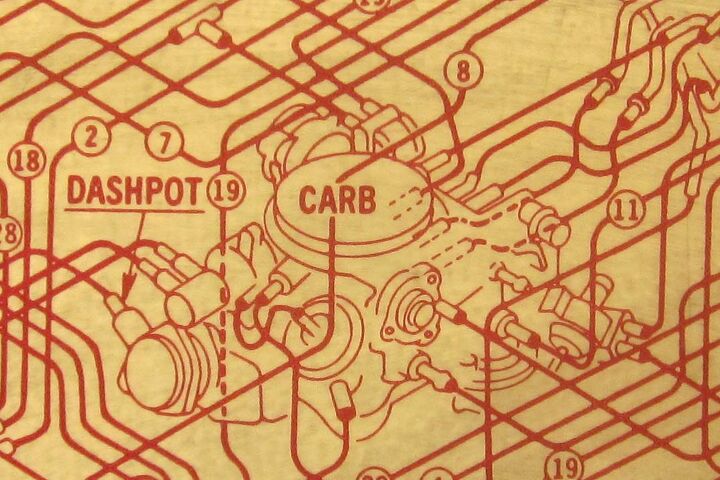




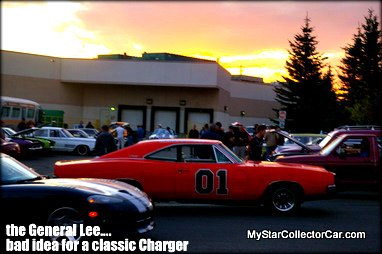


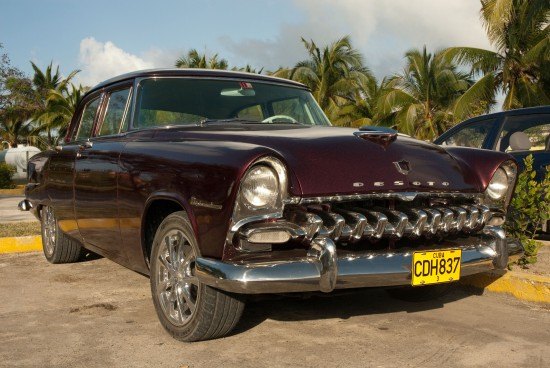
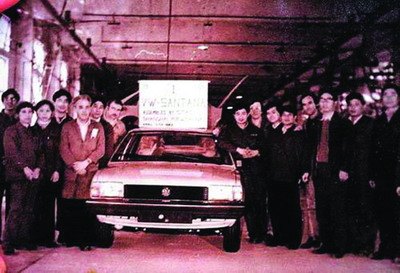
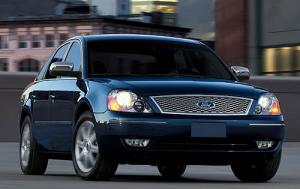
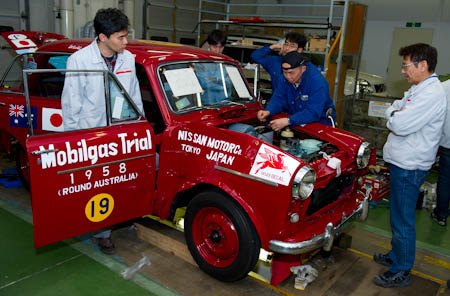

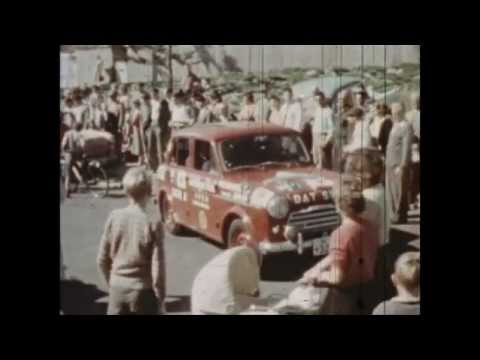
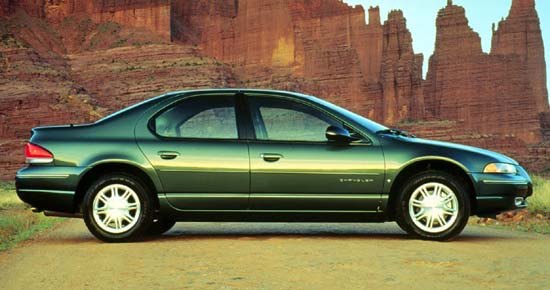





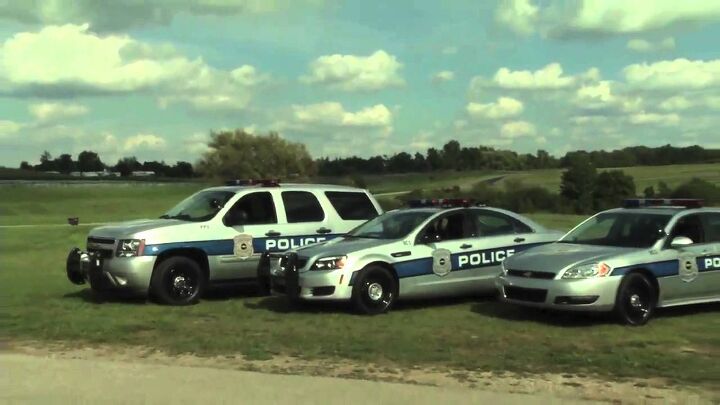

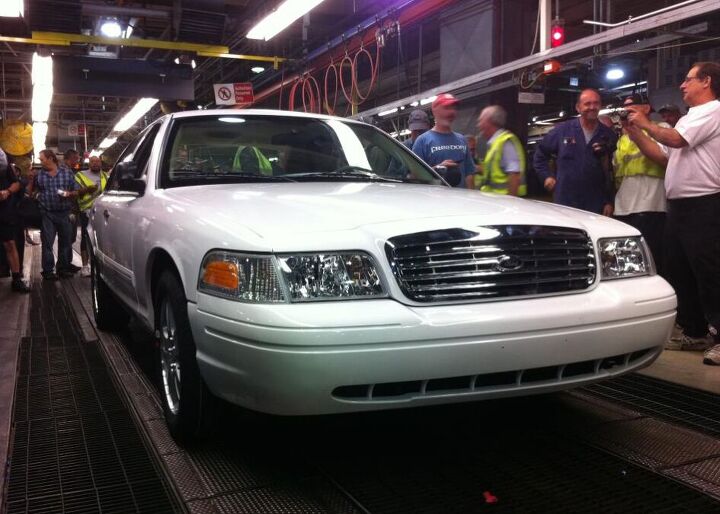
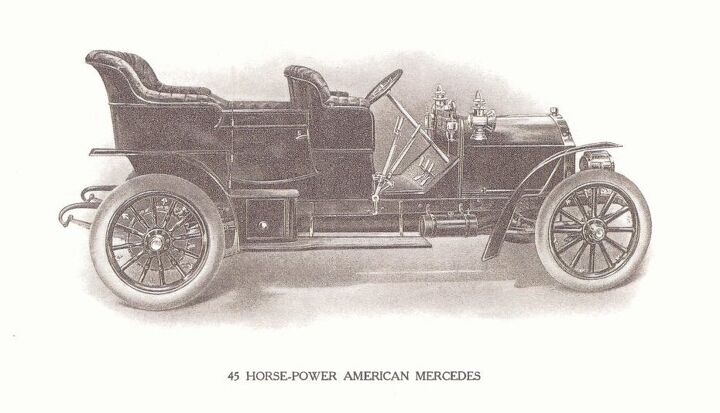
















Recent Comments